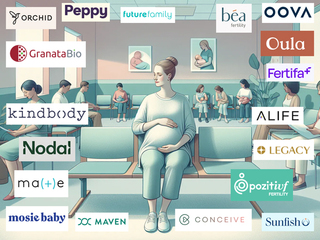
As the US birth rate falls to record lows, which states have the highest fertility rates?
The Dakotas saw the highest number of babies per 1,000 women, while Vermont came in last
 The U.S. birth rate recently fell to a record low, with the general fertility rate dropping 3% to 54.4 births per 1,000 women aged 15 to 44. That included declines across most race and ethnicity groups, including Hispanic women, which had risen in 2022, but fell by 1% to 65 births per 1,000 women in 2023.
The U.S. birth rate recently fell to a record low, with the general fertility rate dropping 3% to 54.4 births per 1,000 women aged 15 to 44. That included declines across most race and ethnicity groups, including Hispanic women, which had risen in 2022, but fell by 1% to 65 births per 1,000 women in 2023.
However, not every state is being affected equally: law firm Birth Injury Lawyers Group put out a new study earlier this week, based on data from the National Center for Health Statistics, to see which US states had the highest fertility rates between 2017 and 2021.
The big winners were the Dakotas, with South Dakota coming in first with an average of 71.2 births per 1,000 women, and North Dakota in second place with a fertility rate of 70.1 per 1,000 women.
In terms of total births in these states, South Dakota had 57,805 births between 2017 and 2021, for an average of 11,561 per year, while North Dakota had 51,884 total for an average number of births per year of 10,399.
Alaska has the third highest fertility rate, with an average of 67.9 births per 1,000 women, 49,189 babies born between 2017 and 2021, for an average of 9,838 births per year. That was followed by Utah, with a rate of 67 per 1,000 women. The state saw 235,043 total births, and an average of 47,007 babies per year.
Rounding out the top five was Nebraska, with 66.7 per 1,000 women. Between 2017 and 2021, 124,964 babies were born, an average of 24,993 births per year.
The states with the lowest birth rates were Oregon, with 50.5 births per 1,000 women, followed by Rhode Island and Massachusetts, each with a rate of 49.4, and then New Hampshire with 49. Coming in dead last was Vermont, with a birth rate of 46.7.
“Fertility rates are not as high as they used to be with many states displaying higher fertility levels in earlier years. Most states display a gradual decrease throughout the years amongst a few anomalies. There could be a wide variety of factors affecting the drop in fertility rates, including greater access to birth control, lower child mortality rates, and improved educational opportunities for women, Bob Goldwater, attorney at Birth Injury Lawyer Group, said in a statement provided to VatorNews.
“Starting a family can also be very expensive at this moment in time with the unpredictability of living costs. When adding another human into the picture, most of your finances will double such as rent costs, food shops, medical bills, and plenty of other financial contributors. This could explain why the fertility rate has slowed down over the past years compared to what it used to be."
Note: Join us for our conversation: The Future of Fertility, May 22 from 4pm PT-6 pm PT online. Panelists: Bambi Francisco Roizen (Founder and CEO, Vator); Dr. Archana Dubey (Chief Medical Officer, United Healthcare); Dr. Jean Gekas (CEO, Genoscience); La Keisha Landrum Pierre (Partner, Emmeline Ventures); Dr. Tammy Mahaney (Suncoast Ventures)
(Image source: nbcnews.com)
Related News





